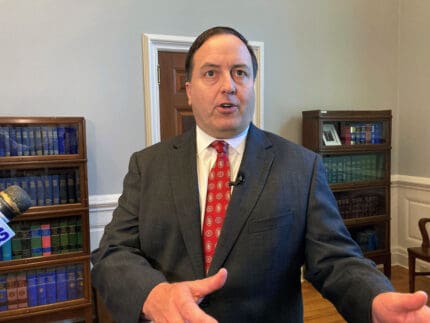Restrictions aren't ending abortions — they're just making it harder on patients
A new study confirms that ‘restrictive policies do not improve reproductive health.’

Ohio keeps trying to restrict access to abortion. In the process, it’s succeeding in pushing abortions back later in pregnancy than patients want and opening a chasm between rural and urban access in the state.
Since 2010, the state has seen over 15 legislative changes related to abortion services. Eleven major anti-abortion bills were passed during the eight-year tenure of former GOP Gov. John Kasich, which ended in January of 2019.
The restrictions include forbidding public hospitals from providing abortion care, creating greater barriers for minors in need of the procedure, and banning abortion at 20 weeks based on medically unsupported claims.
Most recently, the coronavirus pandemic has given Ohio’s current governor, Republican Mike DeWine, a new opportunity to restrict abortion care. The state’s attorney general, Dave Yost, told clinics in March that abortions were barred under a state edict against non-essential procedures during the pandemic, even as doctors pointed out that abortions were “time-sensitive and vitally important.” That order has since gone to court and abortion currently remains available, albeit with all the other limitations the state already imposes.
DeWine also used the pandemic to enact Medicaid cuts, decreasing preventive health care dollars flowing to Planned Parenthood centers in the state, where close to 40% of the patient base uses is for health insurance.
The number of abortions in Ohio has dropped over the last several years, from just over 28,000 in 2010 to 20,425 in 2018. According to the Guttmacher Institute, which researches abortion laws and policies, that decline appears to be related to an overall decrease in births and pregnancies rather than anti-abortion legislation.
Instead, Guttmacher notes, state restrictions are playing a role in making obtaining an abortion more burdensome, often by shutting down clinics where the procedure is performed. Over the last several years, the number of clinics performing abortions in Ohio has dropped 25%. And many clinics are embroiled in litigation trying to stay open.
Now, a new study in the American Journal of Public Health found that Ohio’s restrictive legislation is harming patients by delaying care. Researchers found that as the state continued to pass anti-abortion laws, the proportion of abortions in the first trimester decreased and the proportion in later gestation categories — second- or third-trimester — increased. Even within the first trimester, abortions moved later, with a greater percentage of abortions falling in the “9-13 weeks” category versus the “less than 9 weeks” category.
Alison Norris, a professor of epidemiology at Ohio State University and one of the study’s authors, told Ohio State News that shift only occurred in Ohio. Norris said the finding might mean people are being delayed in accessing abortion services because of the obstacles the state has placed in their way.
The new study also found that increasing legislative restrictions on abortion in the state has led to a growing rural-urban divide. Abortion ratios — the number of abortions per 1,000 live births — dropped much more in rural counties than urban. Urban counties saw a decrease of 24%, but rural counties had a drop of over 32%.
Norris told Ohio State News there’s no reason to believe that this drop in abortion is because there are fewer unintended pregnancies or less demand for abortion in rural areas. She said it’s likely that “some people who have unintended pregnancies and want to end those pregnancies are not getting the care they want and deserve.” She also indicated it also may be that unintended pregnancies could be even more common in rural areas because access to contraception may be more limited there as well.
Ultimately, the Ohio State researchers learned “restrictive [abortion] policies do not improve reproductive health.” The state is only succeeding in pushing Ohioans to have abortions later in pregnancy. Later abortions are, as Norris puts it, “more complex,” and people benefit from having earlier access to the procedure. And in rural areas, the study suggests, some people may no longer be able to access abortion care at all.
Published with permission of The American Independent Foundation.
Recommended

Missouri governor hopeful Bill Eigel rejects affordable childcare proposal
Eigel has previously supported stripping funds from public schools and once opposed an expansion of early kindergarten.
By Jesse Valentine - April 15, 2024
Montana Gov. Greg Gianforte hosts event with religious extremist
J.P. De Gance is the founder of Communio, an organization that uses social media marketing tools to push a far-right agenda.
By Jesse Valentine - March 27, 2024
Texas Gov. Greg Abbott floats building a wall on the Oklahoma border
It’s not the first time Abbott has engaged in Civil War adjacent rhetoric.
By Jesse Valentine - February 22, 2024






































































